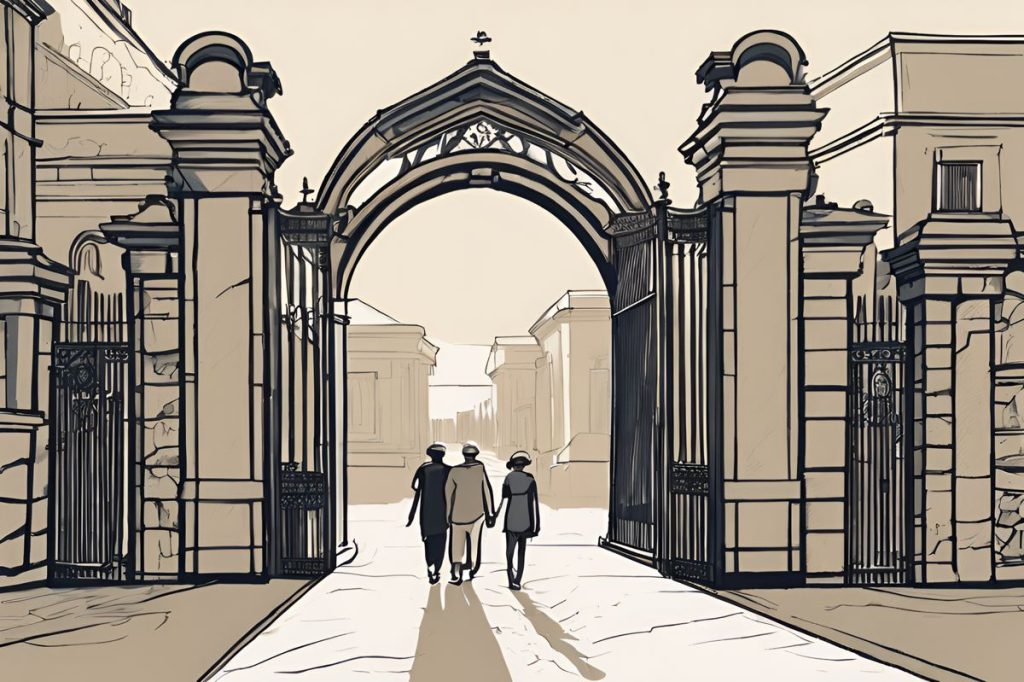Nicosia’s historic Paphos Gate has opened its doors to visitors, offering a glimpse into the city’s rich past. A symbol of cultural heritage, the gate stands as a gateway to different eras, from Venetian to British rule, and serves as an experiential museum showcasing Nicosia’s vibrant history.
What is the significance of Nicosia’s Paphos Gate being opened to visitors?
The opening of Nicosia’s Paphos Gate to visitors marks a significant move in preserving cultural heritage. As a historical entry point into the walled city, the gate allows the public to explore a site that embodies the legacy of different eras, from Venetian to British rule, and serves as an experiential museum of Nicosia’s vibrant past.
A Gateway to the Past
The Paphos gate, sitting on the western boundary of Nicosia’s age-old ramparts, has recently opened its doors to the public. This monumental gate has been a significant point of entry into the walled city, carrying its legacy since the Venetian era. Deputy Culture Minister Vasiliki Kassianidou remarked on the gate’s “timeless importance,” acknowledging its historical significance from the time of Venetian rule right through to the British colonial period. The landmark has seen many eras, including the period of Ottoman dominion over Cyprus, and is now poised to welcome a new era of visitor exploration.
Archaeologists have been particularly intrigued by discoveries in the vicinity, such as the foundations of the Arab Ahmet aqueduct. These finds add layers to our understanding of Nicosia’s rich past. The area is not just a site of historical intrigue but is becoming an experiential museum—a testament to the city’s diverse timeline.
A Collaborative Effort
The project to open the Paphos gate was no small feat. It involved the delicate task of making the historical location accessible while preserving its integrity. Minister Kassianidou noted that this venture was “not an easy task” but was achieved with a “very successful result.” The gate now stands as a proud emblem of heritage, not just for tourists but also for the local populace who hold it dear as a symbol of their cultural narrative.
The effort to promote and preserve such sites, like the Venetian walls of Nicosia, is crucial in maintaining the cultural identity of Cyprus’s capital. The success of the Paphos gate project is a shining example of what can be accomplished through the synergy of local authorities, conservation departments, and research institutions. This cooperative approach underscores the notion that safeguarding cultural heritage is a shared duty—a long-term endeavor that engages the entire community.
Preserving Cultural Heritage
The antiquities department embarked on this journey with the vision of “highlighting the site as an experiential museum of Nicosia’s history.” The challenge was to integrate the archaeological findings into a broader narrative that could be experienced by visitors. Achieving this required meticulous study and planning, demonstrating commitment to the project’s vision. The result is a space where history is palpable, and visitors can step back in time to sense the life of the city in different epochs.
Ultimately, the successful restoration and opening of the Paphos gate reaffirm the importance of collective responsibility in preserving cultural legacies. The preservation of our cultural heritage, as noted by the Deputy Culture Minister, “is a collective responsibility and long-term fight which concerns us all.” It is through such endeavors that historical sites like the Paphos gate will continue to be places of learning and inspiration for generations to come.
A Journey Through Time
With the Paphos gate now open to visitors, one can traverse the very path ancient travelers once took into the heart of Nicosia. It’s an invitation to witness the layers of history, from the architectural marvels of past civilizations to the cultural imprints left by various rulers. This site, rich with the echoes of times gone by, offers an intimate experience with the capital’s historical tapestry. Each corner tells a story, each stone holds a memory, and now, these narratives are there for all to discover and cherish.
What is the significance of Nicosia’s Paphos Gate being opened to visitors?
The opening of Nicosia’s Paphos Gate to visitors marks a significant move in preserving cultural heritage. As a historical entry point into the walled city, the gate allows the public to explore a site that embodies the legacy of different eras, from Venetian to British rule, and serves as an experiential museum of Nicosia’s vibrant past.
What historical periods does the Paphos Gate represent?
The Paphos Gate has stood as a symbol of Nicosia’s history since the Venetian era, continuing through British colonial rule and the Ottoman dominion over Cyprus. It represents a gateway into different historical epochs and serves as a testament to the diverse timeline of the city.
How was the restoration of the Paphos Gate accomplished?
The restoration and opening of the Paphos Gate required a collaborative effort involving local authorities, conservation departments, and research institutions. The project aimed to make the historical site accessible to visitors while preserving its integrity as a cultural heritage site, highlighting Nicosia’s history as an experiential museum.
What is the importance of preserving cultural heritage sites like the Paphos Gate?
Preserving sites like the Paphos Gate is crucial in maintaining the cultural identity of a city or region. These sites serve as places of learning and inspiration for future generations, allowing them to connect with the past and appreciate the historical significance of their heritage. It is a collective responsibility to safeguard cultural legacies for the benefit of all.

